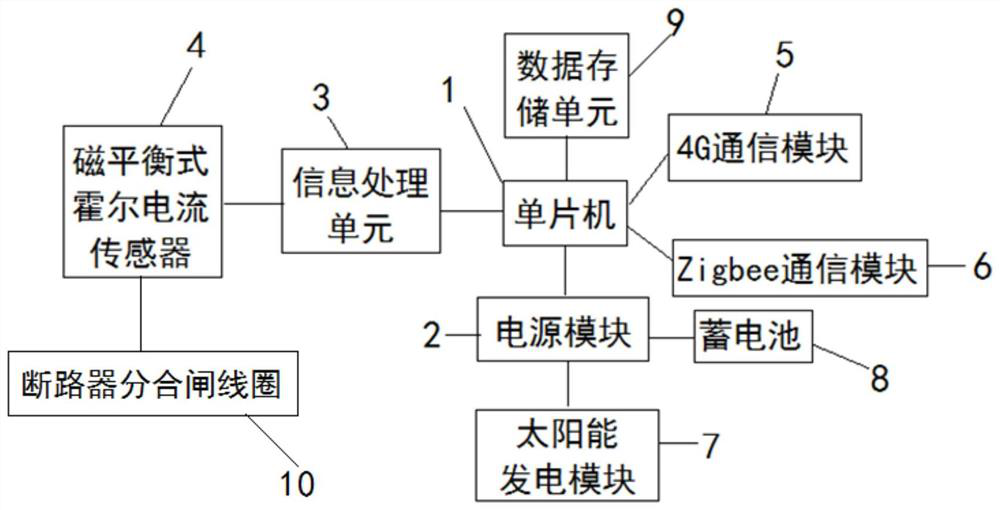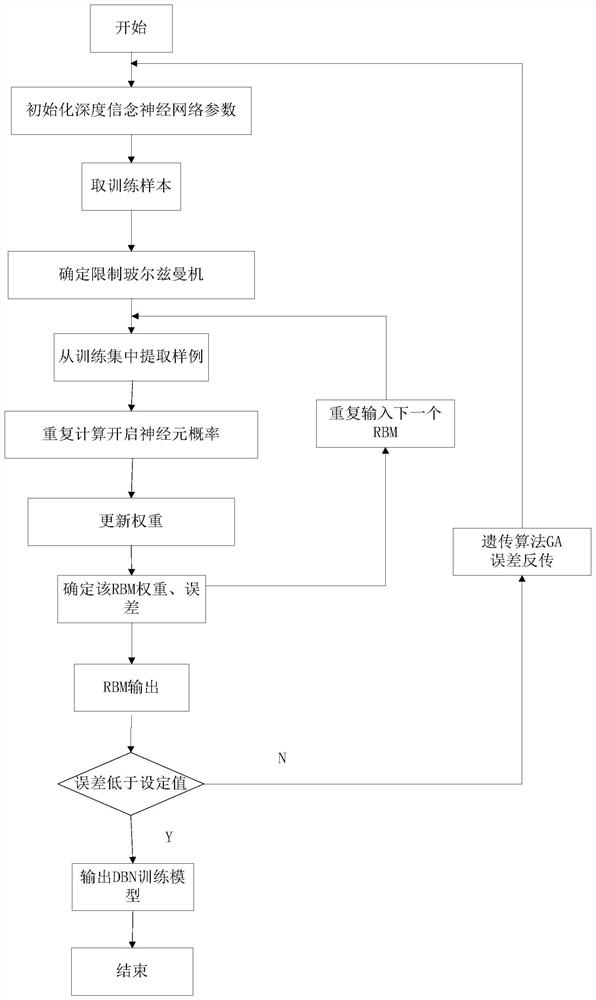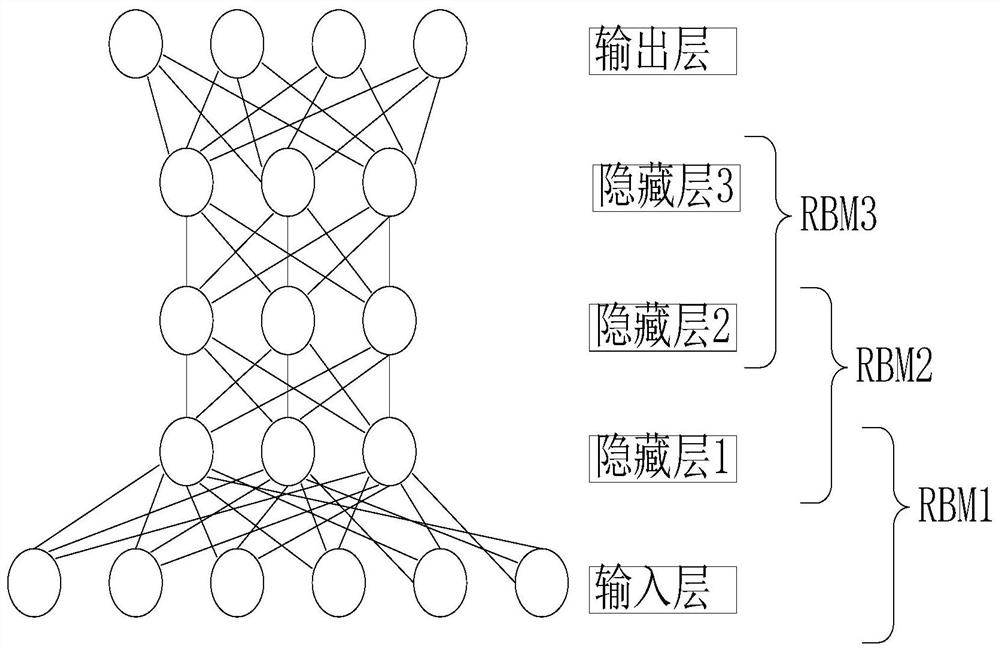Fault detection method of high voltage circuit breaker based on dbn-ga neural network
A high-voltage circuit breaker and fault detection technology, which is applied in the direction of circuit breaker testing, instrumentation, and electrical measurement, can solve the problems of incomplete training and single learning process, so as to make up for the lack of detection, reduce training time, and accurately determine the type of fault Effect
- Summary
- Abstract
- Description
- Claims
- Application Information
AI Technical Summary
Problems solved by technology
Method used
Image
Examples
Embodiment
[0123] Take t0 as the zero point of the command time to extract the fault characteristic parameters I1, I2, I3, t1, t2, t3, t4, t5 to monitor the state of the circuit breaker, and obtain ten sets of fault sample data. These ten sets of fault sample data include normal mechanism ( A), the operating voltage is too low (B), the closing iron core is jammed at the beginning (C), the operating mechanism is jammed (D), and the empty travel of the closing iron core is too large (E). The data collection conditions are shown in Table 1 shown;
[0124] Table 1 Fault sample data
[0125]
[0126] The characteristic curve of closing / opening coil current is as follows: Figure 4 As shown, it can be seen that:
[0127] (1) Phase I, t=t0~t1; the coil starts to be energized at t0, and the iron core starts to move at t1; t0 is the moment when the circuit breaker opens and closes the command, and it is the starting point of the circuit breaker’s opening and closing action timing; T1 is The...
PUM
 Login to View More
Login to View More Abstract
Description
Claims
Application Information
 Login to View More
Login to View More - R&D
- Intellectual Property
- Life Sciences
- Materials
- Tech Scout
- Unparalleled Data Quality
- Higher Quality Content
- 60% Fewer Hallucinations
Browse by: Latest US Patents, China's latest patents, Technical Efficacy Thesaurus, Application Domain, Technology Topic, Popular Technical Reports.
© 2025 PatSnap. All rights reserved.Legal|Privacy policy|Modern Slavery Act Transparency Statement|Sitemap|About US| Contact US: help@patsnap.com



